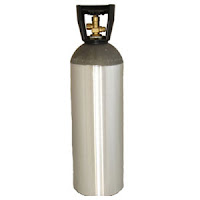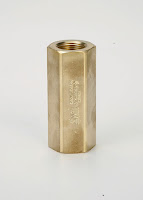 |
| GV Global Industrial Gas Valves |
Gas valves are used to
control the flow of liquids and gases. The gas valves are made from
different materials, various sizes, different size of inlet and outlet
connections, flow rate, pressure rating and the number of ports. The
connection maybe unions, clamps, bolt flanges, butt or socket welds with
internal or external threads.
How are Industrial gas valves made?
Industrial gas valves
are made from metal or plastic. The outer part is called the seat which
is hard while the inner lining is made of soft material to enable the
valve to close tightly. The moving inner part of the valve that opens or
closes is called the body and it fits into the seat. The valves open or
close either by a handwheel, a manual lever or can be automated like in
car engines.
Valves are broadly classified as:
- Angle valve release the content at an angle for maximum flow
- Balancing valve maintains the consistency in temperature by compensating for the pressure drop
- Ball valve encourages tight shutting off the gas valve
- Butterfly valve offers unidirectional flow
- Block and bleed valve
- Diaphragm valve separates the flow of contents from the closing element
- Diverter and directional valve guides the flow through a certain passage
- Gate and globe valve shuts the valves with a linear motion
- Metering valves are mixing valves that are used for specialized applications
- Needle valve has a tapered point at the end of the valve stem
- Stop cock valve is used for throttling applications
Specialized industrial gas valves are:
GV series- European inlet valve
is designed for use in every country. The valve is 100% helium leak
tested and the metal to metal seal below the bonnet threads prevent
pressure at the top of the valve body which offers maximum safety to the
user.
GV series straight thread valves
are usable around the world. The heavy duty forged brass body offers
higher durability, while the plug design provides excellent flow
characteristics and tamper resistance.
GV series, straight thread chrome plated gas valves
are made from heavy duty forged brass and every component is precisely
machined to meet the international valve performance standards.
GV series manifold valves are fitted with a unitized plug designed pressure relief device to match international performance standards.
GV series tapered thread valves
are manufactured at the automated assembly line, which ensures superior
quality. The direct drive stem design is optimized with an O ring or a
double O ring that reduces friction and is easily operated at lower
torques.
GV series tapered thread, chrome plated valve
is made from heavy duty forged brass body for durability at high
pressure. The inlet and outlet threads are internal and external at the
different ports. Various configurations are available for a wide base of
customers worldwide.
The high purity GV series valves are used in cylinders containing welding gas mixtures, oxygen, argon, hydrogen, helium, carbon dioxide and nitrogen. JTC Valves sales stocks the best quality of industrial gas valves
that are manufactured by Sherwood/Rego, the leading valve manufacturers
in the USA. Every valve of the GV series is made from the best quality
forged brass, every internal part is machined for precision and an
automated assembly and testing process ensures a quality gas valve.
The Gas valves
are widely used in various industries that include agriculture,
maritime, mining, construction, cryogenic, food service, flood control,
medical, pulp and paper, irrigation, food processing, automotive and
semiconductor to list a few.
Your search for the best quality gas valves ends here at JTC valve sales.
Find the valve that you require, if it is not listed on the website,
that gas valve is definitely at the warehouse. Contact now for all your
GV series requirement and avail the best offer for the highest quality
product.


